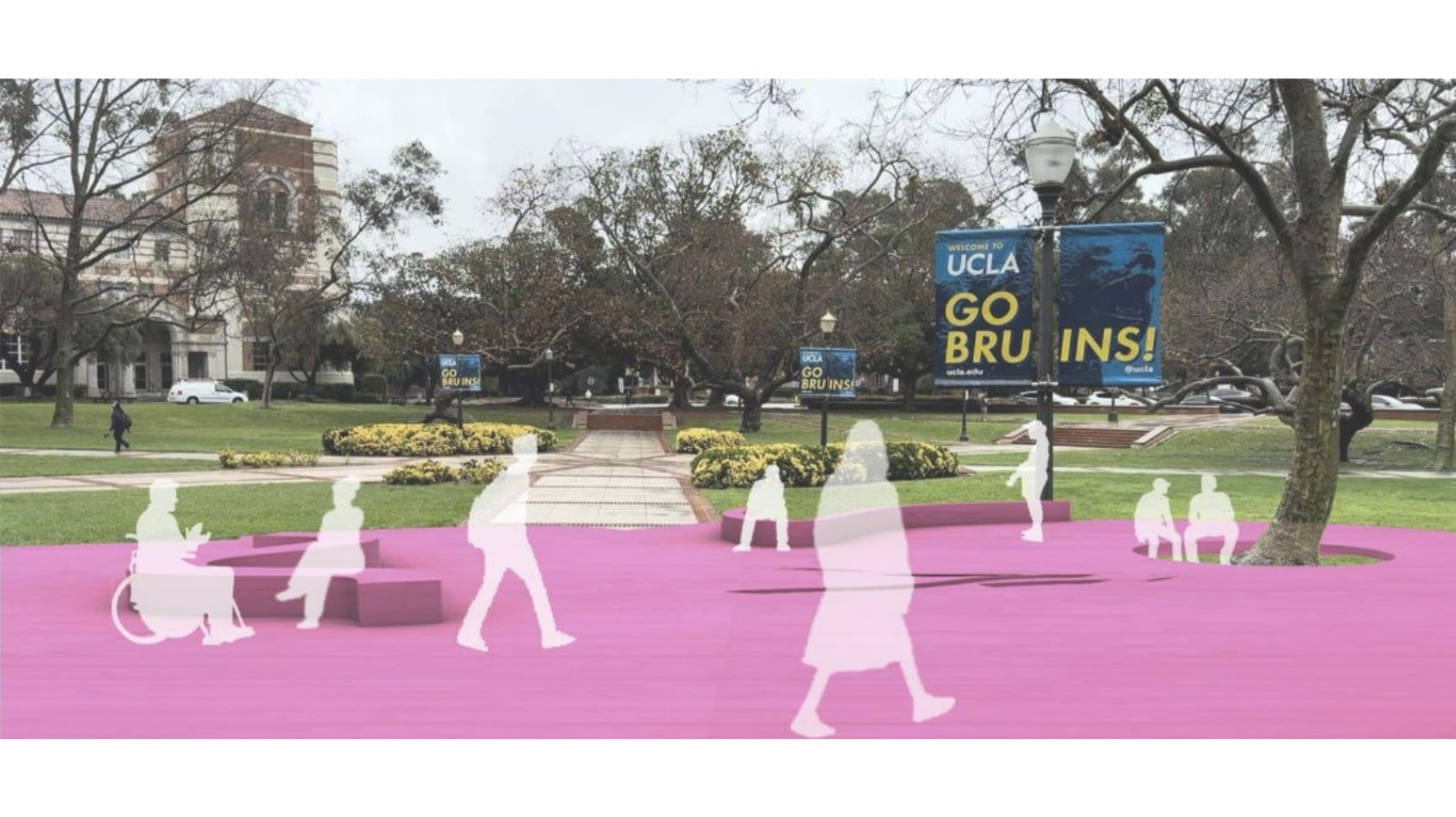Winter Methods Course 2024: Engaged Public Art: Methods and Approaches for Arts-Based Interventions in Public Space
Instructors: Marlené Nancy Lopez, Gus Wendel
Students: UHI 2023-24 Cohort.
The notion of “public space” in western discourse is often inspired by philosopher Jürgen Habermas’ concept of the “public sphere,” where agreement on matters of common interest becomes possible through setting aside differences of status or rank and engaging in discussion among peers. Yet exclusions and the promised benefits for those who can access the public sphere (in western society typically as white citizens with property) have generated long-standing inequities and division. As we have discussed in UHI, one’s relationship to the public is contingent upon racialized hierarchies enshrined within and across spaces at local, regional, and national scales.
This course looks at contending struggles to undo and reconstitute the public in urban spaces through art intervention. Looking at examples in Los Angeles and Tijuana, we trace the ways in which various forms of collective political action recreate public spaces. From murals, graffiti, to digital media, music, and events, students will be exposed to interdisciplinary methods to analyze the built environments and how people move, work, eat, learn, listen and express themselves in these environments, in particular when people challenge meanings of public and create new ones. Sites of interest may also include sidewalks, streets, and alleyways, museums, trains, border crossings, eateries, and plazas. In these various settings, students will critically consider how art upholds or contests a given public. How does art reveal or contest who is assumed to be included in the public sphere? By contrast, how does art reinforce dominant notions of the public? How do new urban practices and artistic interventions affect configurations of gender, race, and the representation of violence? How is precarity reproduced and aestheticized? We will examine these questions through readings and investigation of selected cases both in Los Angeles and Tijuana.
Through readings, lectures, and hands-on practice, students will be introduced to a) examples of socially engaged art interventions and their different forms in Los Angeles and Tijuana; b) methodological connections between public art, architecture, and planning c) how to evaluate public art according to a spatial justice ethics; and d) how to develop engaged public art interventions grounded in creative people power.


The Node: Access and Linkages
UHI Winter Methods Course 2024
Students: Alexa Vaughn, Chendi, Zhang, Julie Wong, Nils Jepson, Peter Tzu Yuan Cheng
In DeafSpace, nodes are collective spaces located along the way to other locations. They promote casual interaction, have a variety of visual connections, and provide comfort for a variety of communication types, socialization, programming, and flow of activity. They enhance and celebrate inclusion and accessibility.


Comfort and Image: Come Hang Out!
UHI Winter Methods Course 2024
Students: Sarah Zureiqat, Xen Pei, Sarp Tanridag, Ariella Ventura, Jackie Vela, Tomi Jinhuang Chung
The purpose of this project is to create spaces of comfort for self expression, synchronous and asynchronous community engagement, and collective work. The project engaged a rarely utilized space with a flexible concept that encourages people to easily test their ideas and participate.


Joy as and Act of Resistance
UHI Winter Methods Course 2024
Students: Derrick Behm Josa, Ben Maries, Steven Mora, Maxwell Kilman, Richard Kirk
Each of us have experienced feelings of marginalization since childhood. While our individual experiences of marginalization have differed greatly and are related to our various positionalities, we nevertheless carry childhood trauma with us. The prompt that we invite community members to creatively engage with—“What advice would you give to your younger self?”—is inspired by a trauma-informed therapeutic approach known as ego state therapy. A common technique utilized in ego state therapy asks us to imagine a past version of ourselves and to cognitively “meet” this past self, and to pass on some knowledge or reassurance to them, which has been shown to be clinically helpful in aiding trauma recovery. This community-engaged art will activate Perloff Hall grounds by using old-school elmo and transparencies, giant lite-brite, and playful furniture. The launch event will include UCLA CAPS and other community social workers/therapists to cultivate a community of care. The art intervention will only last one quarter, with possibility of being repeated yearly depending on its demand.
